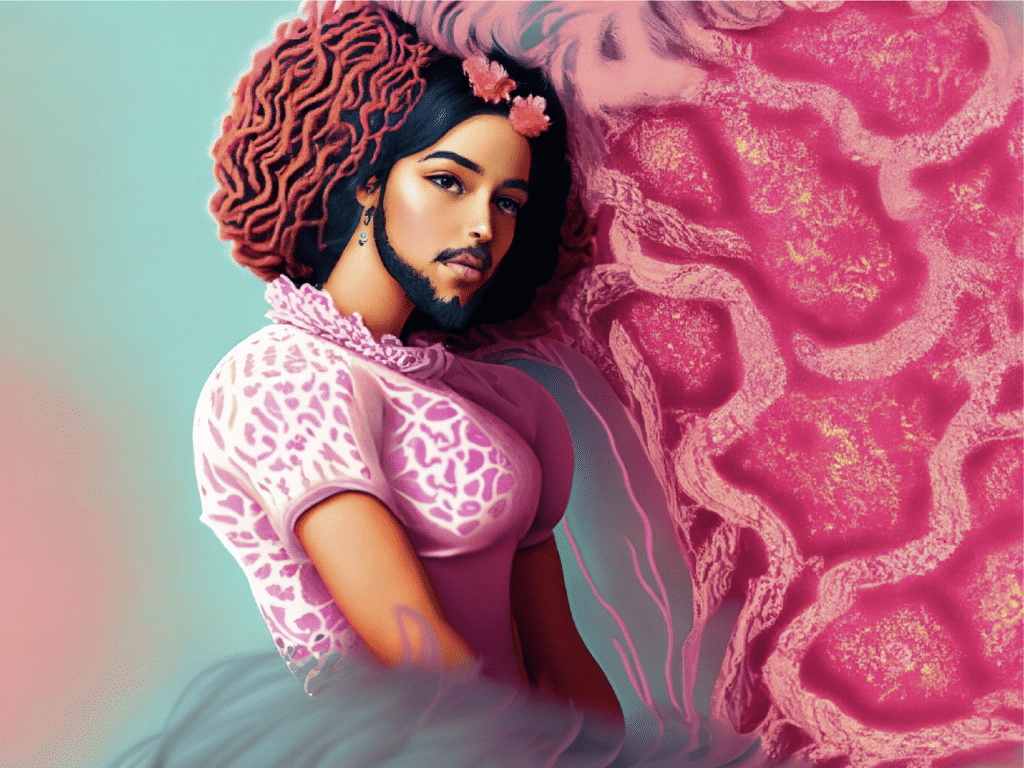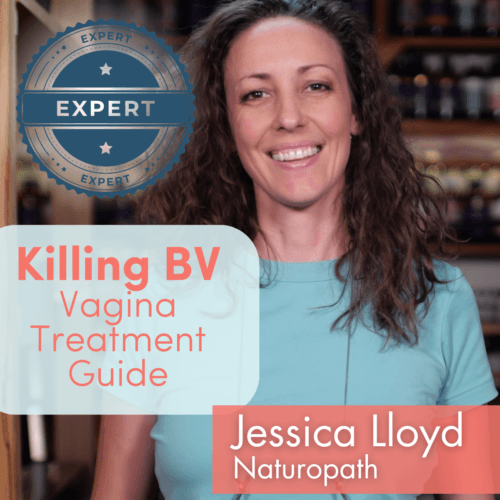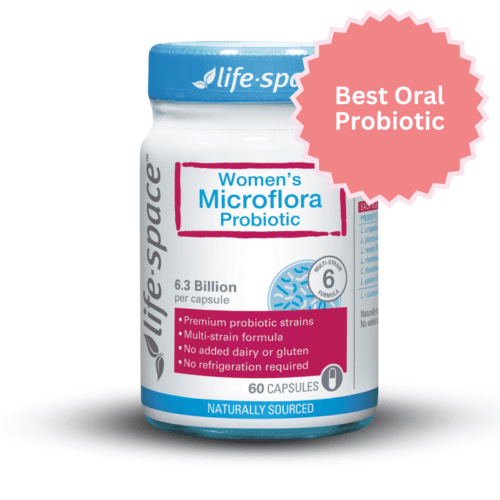Hirsutism (HUR-soot-iz-um) is a condition of male-pattern hair growth in women which is thought of as ‘excess hairiness’ because it is usually unwanted and unusual.
Hirsutism means that excessive amounts of stiff and pigmented hair (called terminal type hair) grows on body areas where men typically grow hair — face, chest and back — due to the impact of androgens on hair growth.1
Hirsutism is caused by hormonal disruptions that result in an excess of androgens, called androgen excess. Hirsutism affects about 10 per cent of women.
The amount of body hair you naturally grow is largely determined by your genetic makeup, so some of us are naturally hairier than others. For example, Mediterranean women have more coarse, pigmented hair growth compared with fair-skinned Europeans. This difference may be due to increases in an enzyme in the skin that is related to hair growth.
Our hair follicles are sensitive to hormones. A hormone can tell a hair follicle to produce a certain type of hair. Men have different types of hair than women because they have more testosterone, which tells the hair follicles to grow that sort of hair.
When hormones shift and androgens, like testosterone, increase beyond what would be considered normal for you, your hair follicles respond by producing different types of hair.
These hairs are known as terminal hair, and typically appear on a man’s body on the chest, face, and back. Hirsutism, however, can also be a family trait for some of us, so if your family are hairy, you are very likely to be hairy too.
How being too hairy can affect your feelings
Hirsutism is a cause of negative self-image in many women because hair can grow on the face and chest – big, wiry, thick hairs. Some women have to shave or use other hair removal techniques every day or every few days to manage the appearance of the hair growth.2
How you deal with the psychological fallout of your body growing out of control hairs in places you really don’t want them will be an individual journey. Some of you will have hirsutism your whole life, perhaps in varying degrees, but this will depend largely on the cause of the excessive growth of hair.
There is a trend towards embracing hirsutism, for the simple reason that many hormonal causes of hirsutism can be difficult to treat. This means you have two choices: embrace your hairiness or remove it/hide it.
Getting to the bottom of hirsutism means that first serious medical causes of the excess hair must be eliminated, then treatment can follow. Usually treatment will mean correcting an hormonal imbalance.
Women do have androgens, but what those levels are naturally will fluctuate throughout your menstrual cycle and life. They can also spike if there is something going awry.
Causes of hirsutism
- Polycystic ovarian syndrome (PCOS)
- Congenital adrenal hyperplasia (CAH)
- Excess androgens caused by adrenal or ovarian tumours
- Cushing syndrome3
- Androgens from the environment (exogenous androgens, which can be environmental or contributed to by some medications)
How hair grows and how hormones affect hair growth
Hormones cause different types of hair to grow in men and women. Vellus hairs are fine with less pigmentation, found in children prior to puberty, but androgens at puberty change these vellus hairs into coarser, pigmented terminal hairs.4
The extent of terminal hairs is dependent on your exposure to androgens, enzyme (5-alpha-reductase) activity, and the sensitivity of the hair follicles to androgens.
Some terminal hair growth is completely independent of androgens, such as eyebrows, eyelashes and the scalp. The hair-growth cycle has two phases – an active growth phase (anagen phase) and a resting period (telogen phase).
After the growth phase, the hair shaft becomes unattached, and no more hair growth can take place. Soon enough growth starts again, and the old hair is pushed out and the new hair takes its place.
This cycle can take months or years, and thus hair regrowth after treatment of your underlying condition can take a while to appear.
- Dihydrotestosterone (DHT) is the androgen that causes a hair follicle to produce a coarse, pigmented terminal hair.
- Testosterone is the precursor to DHT.
- DHT levels are determined by enzyme 5-alpha-reductase activity in the skin.
- How much of this enzyme you have in your skin can be genetic.
Some women with the same testosterone levels can have different levels of hairiness, with the enzyme possibly responsible for this difference in hair outcomes.
Treating hirsutism
Treating hirsutism must start with both cosmetic considerations as well as treating the cause (if a condition exists). One of the most common causes of hirsutism in women is polycystic ovarian syndrome (PCOS), which can be treated using diet modifications.
Adjusting your hormone levels back to normal levels will reduce or entirely remove the excess hair.
You can read more about removing hirsutism in PCOS here.
The main cause of hirsutism in women is excess androgens, which can be treated according to whatever the underlying condition may be.
Treatment may include androgen-blocking drugs, but conventional treatment is likely to be starting the oral contraceptive pill. The pill does not resolve the cause of the underlying hormonal problem and is likely to interfere with fertility later on when you try to get pregnant, so may not be a good choice for everyone.5
Cosmetic treatments may include waxing, shaving, laser treatments and hair-removal creams. Laser produces the best results. Laser hair removal technology has come a long way, and now clinics with state of the art lasers can remove hair on just about any skin tone.
Going on androgen blocking drugs is typically avoided where possible, and managing the underlying hormonal condition is preferred. This treats the cause, as opposed to simply managing symptoms.6
A investigation into the cause of the hair growth is required first, so that you know what you are dealing with.
Then, a naturopath is a good option for learning how to manage your hormones without drugs. PCOS, for example, can be fully managed using diet and some specific supplements, but other underlying health conditions may require a different approach. Speak to your doctor about being tested.
References7–10
- 1.Matheson E, Bain J. Hirsutism in Women. Am Fam Physician. 2019;100(3):168-175. https://www.ncbi.nlm.nih.gov/pubmed/31361105
- 2.Hodeeb YM, Al Dinary AM. Hirsutism and Health Related Quality of Life. Mod Chem Appl. Published online 2015. doi:10.4172/2329-6798.1000170
- 3.Lacroix A, Feelders RA, Stratakis CA, Nieman LK. Cushing’s syndrome. The Lancet. Published online August 2015:913-927. doi:10.1016/s0140-6736(14)61375-1
- 4.Hohl A, Ronsoni MF, Oliveira M de. Hirsutism: diagnosis and treatment. Arq Bras Endocrinol Metab. Published online March 2014:97-107. doi:10.1590/0004-2730000002923
- 5.Barrionuevo P, Nabhan M, Altayar O, et al. Treatment Options for Hirsutism: A Systematic Review and Network Meta-Analysis. The Journal of Clinical Endocrinology & Metabolism. Published online March 7, 2018:1258-1264. doi:10.1210/jc.2017-02052
- 6.Swiglo BA, Cosma M, Flynn DN, et al. Antiandrogens for the Treatment of Hirsutism: A Systematic Review and Metaanalyses of Randomized Controlled Trials. The Journal of Clinical Endocrinology & Metabolism. Published online April 2008:1153-1160. doi:10.1210/jc.2007-2430
- 7.Escobar-Morreale HF, Carmina E, Dewailly D, et al. Epidemiology, diagnosis and management of hirsutism: a consensus statement by the Androgen Excess and Polycystic Ovary Syndrome Society. Human Reproduction Update. Published online November 6, 2011:146-170. doi:10.1093/humupd/dmr042
- 8.Spritzer PM, Marchesan LB, Santos BR, Fighera TM. Hirsutism, Normal Androgens and Diagnosis of PCOS. Diagnostics. Published online August 9, 2022:1922. doi:10.3390/diagnostics12081922
- 9.Gautam R, Kulshreshtha B, Prasad A, Sharma N, Chhabra S. Hirsutism: A Clinico-investigative Study. Int J Trichol. Published online 2012:246. doi:10.4103/0974-7753.111204
- 10.Sachdeva S. Hirsutism: Evaluation and treatment. Indian J Dermatol. Published online 2010:3. doi:10.4103/0019-5154.60342
The most comprehensive vaginal microbiome test you can take at home, brought to you by world-leading vaginal microbiome scientists at Juno Bio.
Unique, comprehensive BV, AV and 'mystery bad vag' treatment guide, one-of-a-kind system, with effective, innovative treatments.
Promote and support a protective vaginal microbiome with tailored probiotic species.






